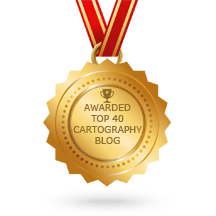Here are a few urban planning items to close out Philadelphia month. Hope you have enjoyed the journey.
Cathedral Road:
There are many discontinued highways and roads to nowhere throughout the United States, including Woodhaven Road, a dead end expressway in Northeast Philadelphia. Cathedral Road was planned as a major four lane highway connecting the affluent areas of Chestnut Hill and Bryn Mawr across large parts of Northwest Philadelphia and across the Wissahickon Creek.
 |
| via Hidden City |
While this is mainly a local story (extensively documented in Hidden City), I find it interesting to see a four lane, empty tree lined highway on Google Street View,
eventually ending at the woods.
 |
| images via Google |
Here is an overall plan of the area via Hidden City
Mid-century city planner Edmund Bacon was one of the era's primary visionaries though some of his early projects were more beneficial to suburban commuters than to city residents. Here is a picture of his 3D model of the city.
 |
| via Philadelphia Inquirer |
Bacon believed in a top down approach to planning. As an antidote, University of Pennsylvania professor and landscape architect Ian McHarg advocated for a nature based approach to planning. His book Design With Nature influenced many future planners including me in college. He was also an early pioneer in the idea of creating overlays (showing natural features such as soils and aquifers underneath the built environment), one of the foundations of GIS. Here is a piece of a very large map he created with his students showing the area's geology under the city's grid.
 |
| via WHYY Philadelphia |
More on McHarg here.
































